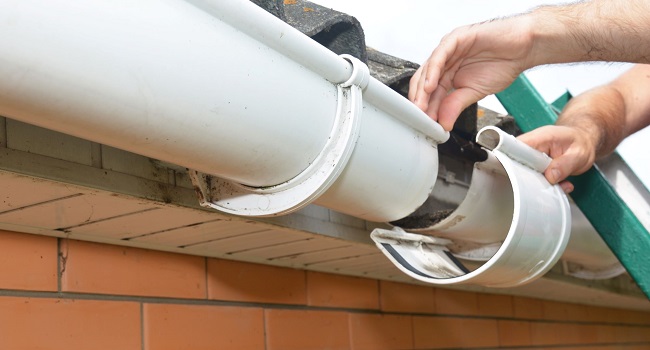Often called gutters, eavestroughs are crucial in maintaining your building’s structural integrity. These vital components efficiently divert rain and snow away from your property, guarding against possible deterioration.
Yet, as with any architectural feature, eavestroughs aren’t immune to wear and tear. Knowing when to replace eavestroughs is important. Understanding why is equally vital. Together, they are just the beginning of ensuring proper building maintenance. To learn more, consider reading the guide below.
Understanding The Importance Of Eavestroughs
Eavestrough systems act as silent defenders for buildings, protecting against water-induced damages. At first glance, they may seem straightforward, but their function in managing water runoff is paramount to ensuring your infrastructure remains moisture-free and undamaged.
Here’s a closer look at the protective roles of an eavestrough:
- Preventing Water Damage: Eavestroughs direct water away from the foundation, stopping potential flooding and safeguarding your building’s structural robustness. They also deter stains or damage to your siding or brickwork.
- Shielding The Landscape: Eavestroughs help prevent soil erosion, preserving your garden and outdoor spaces. They also stave off puddle formation, which could be detrimental to plants and the overall appearance of your yard.
- Guarding Against Basement Leaks: Eavestroughs’ ability to redirect water reduces the chance of basement leaks and mold growth. A moisture-free basement is not just about comfort but also health, as it reduces risks of allergens and respiratory issues.
Without dependable eavestroughs, your property is at risk of significant damage. Not only do they protect the physical structure, but they also maintain the aesthetics and overall health of your living environment.
Signs You Need An Eavestrough Replacement
Faulty eavestroughs can lead to expensive problems. Knowing the red flags of a declining system is the first step in preventing these issues. Here are crucial symptoms that indicate potential problems:
- Sagging Or Pulling Away: Eavestroughs should remain securely in place. If you notice some parts of it are sagging or detaching from your building, it typically indicates that the system is overwhelmed by weight, either from debris or trapped water. This added weight can weaken the fasteners or warp the material.
- Visible Rust And Cracks: These are obvious signs of wear and tear. Rust indicates deterioration, particularly in metal eavestroughs. Similarly, cracks, no matter how small, can grow over time. They can become channels for water, directing it towards your building instead of away from it.
- Constant Clogging: An occasional clog can happen, especially after a storm or during the fall when leaves drop. However, frequent clogging may suggest a design flaw or irreparable damage obstructing water flow. It could also lead to water overflow or backups, which strain your eavestrough system.
- Frequent Overflow: If water overflows even during moderate rains, it’s a sign the eavestrough isn’t functioning properly. Overflow might indicate clogs, but it can also suggest that your eavestroughs might be undersized for the volume of water they’re dealing with.
- Rot Or Mold On The Building: This indicates that water isn’t effectively channeled away from your home. When eavestroughs fail, water tends to pool around the foundation or seep down the sides of the building. Over time, this constant moisture can promote mold growth and cause wooden elements to rot.
Each of these signs reflects a particular type of problem. While minor issues might be addressable with repairs, multiple warning signs or persistent problems are signs that a full eavestrough replacement is a wiser, more cost-effective solution in the long run.

Choosing The Right Eavestrough
Knowing when and why to replace eavestroughs is just the beginning. Selecting the right one is the next step. To start, here are some factors to consider:
- Material: Each material has a different lifespan. Aluminum is popular due to its longevity and rust resistance, while copper is pricier but can last decades. Vinyl, though less expensive, may not hold up well in extreme climates.
- Size: Depending on your building’s dimensions and local rainfall, you might opt for standard residential sizes or larger commercial-grade ones. An incorrect size can result in inefficient drainage and recurring overflows.
- Shape: Whether K-style or half-round, eavestroughs should complement your building’s design. Each shape has its own advantages in terms of water flow and debris management.
- Color: You can select a shade that matches or contrasts with your building’s exterior. This choice can help eavestroughs blend with the façade or serve as a distinctive design feature.
It’s wise to hire professionals for installation. While DIY might seem cost-effective at first, errors can lead to greater expenses down the road.
The Bottom Line
Replacing your building’s eavestroughs when necessary isn’t just about aesthetics. It’s crucial to safeguard your home’s structure, foundation, and surrounding landscape. Regular inspections, recognizing wear signs, and taking timely action are vital. Whether it’s maintenance or replacement, being proactive is the best shield against potential damage.




























